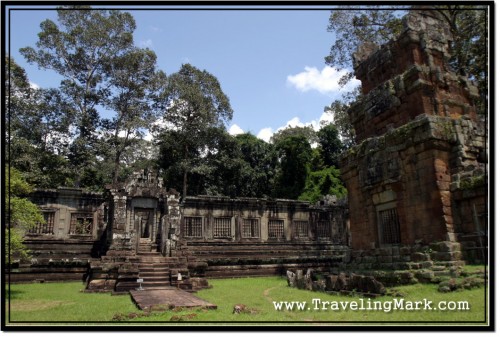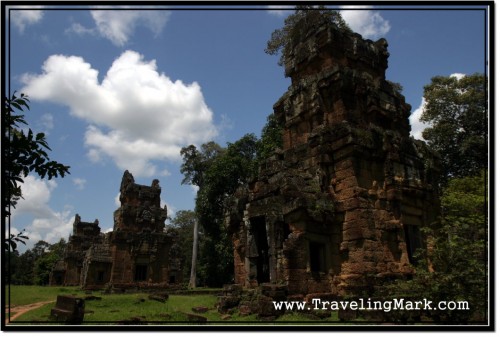The Khleangs are two larger structures facing the Angkor Thom Royal Palace area from behind the Prasat Suor Prat Towers. One on each side of Victory Way, scholars doubt The Khleangs would have been made to function as store houses as their current Khmer name would suggest.

The North Khleang was built at the end of the 10th, beginning of 11th century, proceeding the South Khleang by a few hundred years signifying that the original purpose was not to build symmetrical buildings. The inscriptions on the North Khleang repeatedly mention king Jayaviravarman suggesting that it was built during his reign.
The South Khleang was probably built during the reign of king Suryavarman I and it was likely meant to improve the symmetry of the Royal Palace area. The South Khleang is narrower than his northern brother, less architectonically striking and was left unfinished.
Two pools were built to flank The Khleangs on inner sides but during my visit only south pool had water in it. It is my understanding that The Khleangs were built in their own distinguished style, but despite this potentially intriguing architectonic uniqueness I didn’t find them anything special and moved on to Vihear Prampil Loveng which is just as unattractive as The Khleangs but houses the statue of Buddha that was originally inside the central sanctuary of Bayon, but later destroyed by king Jayavarman VIII.
